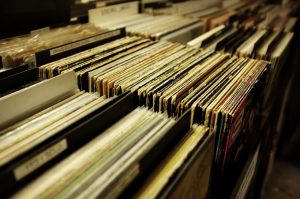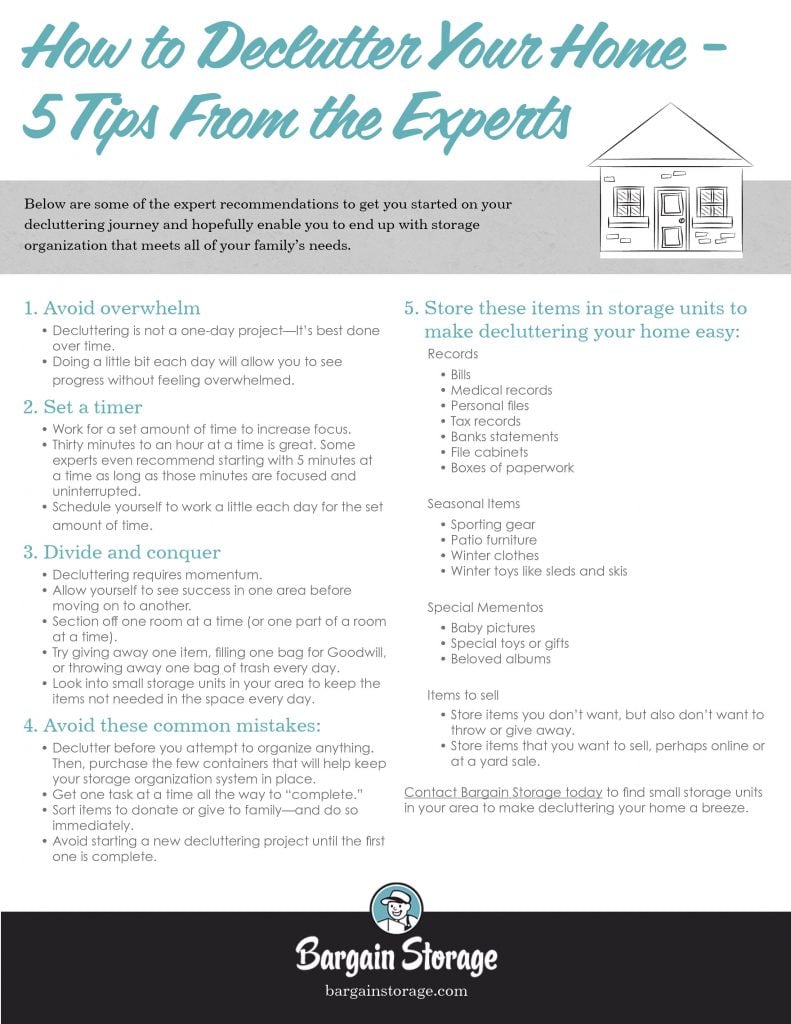 The start of a new year brings many opportunities to hit the reset button in life. Of course it’s a popular time to set or renew commitments to goals in important areas like health or relationships, but it also offers the opportunity to purge the clutter from our lives and spaces.
The start of a new year brings many opportunities to hit the reset button in life. Of course it’s a popular time to set or renew commitments to goals in important areas like health or relationships, but it also offers the opportunity to purge the clutter from our lives and spaces.
In this first post of our Organizing series, we offer recommendations most agreed upon by experts on decluttering your home and finding a system of organizing what is left. Here are some of the big themes to get you started on your journey that will hopefully enable you to end up with storage organization that meets all of your family’s needs.
Avoid overwhelm: One of the biggest deterrents for those considering decluttering their homes is that it can feel like such a huge undertaking. Giving in to this feeling of overwhelm usually results in a job half done or never started in the first place. We recommend reminding yourself that this is not a one-day project, and that it’s actually better for it to be done over time. In fact, experts strongly recommend that you do not try to do it all in one day. Doing a little bit each day will allow you to see progress without feeling overwhelmed.
Set a timer: Setting a timer to work for only 30 minutes or an hour at a time can be very helpful. Some experts even recommend starting with 5 minutes at a time as long as those minutes are focused and uninterrupted. Having a timer set will increase focus and help to avoid distraction from the task at hand. It’s helpful to schedule yourself to work a little each day but only for the set amount of time.
Divide and conquer: Decluttering is a unique activity that is far better accomplished in one area at a time. This creates momentum. It’s important to allow yourself to see success in one area before moving on to another. Section off one room at a time (or one part of a room at a time) and focus your decluttering efforts there. The one-at-a-time method can also be employed by giving away one item a day, by going through your house and filling one bag for Goodwill each day, or by throwing away one bag of trash a day.
Mistakes to Avoid When Decluttering Your Home
There are some common mistakes that experts in the field of decluttering and organization find to be a problem over and over. Here are some of them:
Don’t buy before you organize: Many people make the mistake of buying bins and containers before they tackle their decluttering—only to find themselves with piles of bins and containers adding to their clutter. Experts recommend that you declutter before you attempt to organize anything. Then, organize what you can with what you have. Then, purchase the few containers that will help keep your storage organization system in place.
Don’t go half way with any task: This goes back to the momentum advice. It’s important to get one task at a time all the way to “complete.” There is no sense in gathering items to give away, only to have bags of them hanging around for weeks. If you sort items to donate or give to family—do so immediately. Avoid starting a new decluttering project until the first one is complete.
Don’t mistake it for a “one-and-done” situation: Decluttering is not an event that by itself will change your life. Decluttering is the first step towards creating a system that works for your home. You still have to work the system by creating a place for everything and then keeping everything in its place. We recommend that after you declutter, you look into small storage units in your area to keep the items not needed in the space every day.
How Storage Units Can Help
 Many families find that small storage units can help in a big way when it comes to decluttering the home. In particular, there are 4 categories of items that can be stored to keep your home clutter free. These are records, seasonal items, special mementos, and items to sell.
Many families find that small storage units can help in a big way when it comes to decluttering the home. In particular, there are 4 categories of items that can be stored to keep your home clutter free. These are records, seasonal items, special mementos, and items to sell.
Records: From bills to medical records, everyone finds that there are files that need a place to live until they can be shredded or discarded. It is recommended that tax records be kept for 7 years and banks statements for at least 1 year. Medical records may need to be kept for many years as well. File cabinets and boxes of paperwork can be organized best in a spacious storage unit rather than crammed in a garage or attic space where they may never be found when they are needed.
Seasonal Items: Sporting gear, patio furniture, winter clothes, holiday decorations and winter toys like sleds and skis all have a time throughout the year that they are not needed at all. Rather than having these items stacked in crowded closets or garages, they can be kept in secure storage unit, ready for when their season comes back around.
Special Mementos: We all have items that we want to keep, even after we have decluttered our home. These may be baby pictures, special toys or beloved albums we simply can’t part with. These items are perfect examples of what can be kept safely in small storage units where they are protected from damage or loss.
Items to sell: Decluttering will often result in items we simply don’t want, but also don’t want to throw away. Sometimes, these are best donated (preferably immediately) to family, friends, or organizations like Goodwill. But other times, there will be items that you want to sell, perhaps online or at a yard sale. These items need a home until they can be sold, and a storage unit it ideal for them.
Contact Bargain Storage today to find storage units in your area to make decluttering your home a breeze.
Fore tips on decluttering your home, download our checklist here.

